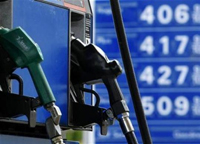US drivers risk their lives filling tanks with Mexican fuel
U.S. motorists are risking rampant drug violence in Mexico to drive over the border and fill their tanks with cheap Mexican fuel, some even coming to blows over gas shortages and long queues.

The gap between Mexico's subsidized gasoline and record U.S. prices has made it well worth making the trip, and U.S. drivers are even shrugging off the dangers of Mexico's drug war which sees almost daily shootings in border towns.
Some say they can save up to $100 a month by filling up every two weeks in Mexico. The extra demand is causing shortages at hundreds of Mexico's border gas stations, some of which are starting to ration fuel.
"It's worth taking the risk even with the violence," said a retired California engineer named Terry, who declined to give his surname, as he filled his red Ford pick-up truck in Tijuana, over the border from San Diego. "I know they could kill me or kidnap me, but the cost of filling my tank in the United States is just too much," he said.
Mexico's subsidized gasoline -- around $1.40 cheaper per gallon than in the United States -- is a huge draw as average U.S. pump prices hit an unprecedented $4 a gallon ($1.06 a liter). In West Coast cities like San Francisco and Los Angeles, prices are over $4.50 a gallon.
Savings on diesel in Mexico are even greater. A gallon of diesel in southern Arizona cost $4.64 this week, compared to around $2.25 in Mexican border towns, Reuters reports.
Car manufacturers should change the way they advertise the fuel efficiency of their vehicles, to make the environmental impact of buying a new car easier to understand, researchers said yesterday (JUN19).
Turning a car's fuel efficiency on its head by stating it in "gallons per mile", instead of "miles per gallon" helps potential customers choose the greenest option when they upgrade, said the team at Duke University in North Carolina.
In The MPG Illusion, published in the US journal Science yesterday, Richard Larrick and Jack Soll at the university's Fuqua School of Business describe how the use of miles per gallon is misleading and causes people to grossly misjudge the environmental impact of upgrading to a new car.
The two management professors stumbled across the problem while working out the true fuel efficiency of different cars in a car-sharing scheme.
They found people often believed - mistakenly - that a 10mpg improvement in fuel efficiency always corresponded to the same fuel saving.
"The reality that few people appreciate is that improving fuel efficiency from 10 to 20mpg is actually a more significant saving than improving from 25mpg to 50mpg for the same distance of driving," said Larrick.
Likewise, replacing a car that does 10mpg with one that appears only slightly more efficient at 11mpg saves as much fuel as upgrading from a 33mpg car to a 50mpg car.
To work out new fuel efficiencies, Larrick calculated how many gallons of petrol a car would burn over 10,000 miles. A 10mpg car would burn 1,000 gallons, while a 20mpg car would burn only 500 over the distance. In comparison, a 25mpg car would use up 400 gallons, while a 50mpg car would use 200. Despite most people's first impressions, the fuel saving is 2.5 times greater in the first instance, The Guardian reports.
The finding suggests that people who use two different cars equally will always save more on fuel by improving the least efficient car.
Source: agencies
Subscribe to Pravda.Ru Telegram channel, Facebook, RSS!





